Quailfinch
Posted: Thu Mar 27, 2014 3:18 pm
852. Quailfinch Ortygospiza atricollis (Gewone Kwartelvinkie)
Order: Passeriformes. Family: Estrildidae
Description
Length about 10 cm. Size very small; tail short. Adults are sexually dimorphic in plumage, and they vary in bill and plumage colour and the intensity of plumage markings. Above grey; eyepatch and chin white. White barring on chest and flanks. Iris orange-brown. Legs and feet light brown.
Male: Greyish-brown upperparts. Breast and flanks barred black and white. Forehead, malar stripe and throat black. Red bill when breeding. Pinkish legs. Long hind claw. Belly light rufous, shading to white undertail.
Females lack the facial mask and are duller. Forehead, malar stripe and throat grey. Bill dusky brown above, pink or red below.
Juveniles similar to the female but below light brown, without barring and a darker bill.
Chick: Pinkish orange with long white dorsal plumes; palate pale pink or yellowish with 6 black spots; tongue pale pink with 2 black spots and black tip; black crescent on inside of lower jaw; pale pink fleshy swelling at gape; 3 iridescent opalescent tubercles on black skin at base of each side of upper jaw, and 1 at base of lower jaw; alternating black and white tubercles along edges of upper and lower jaws.
Similar species: The absence of red or orange on the rump distinguishes it from Locustfinch and Orange-breasted Waxbill.
Taxonomy
We formerly recognized three species of Quailfinch: Black-faced Quailfinch Ortygospiza atricollis, Black-chinned Quailfinch Ortygospiza gabonensis, and African Quailfinch Ortygospiza fuscocrissa. These are all now lumped under a single species, but the forms are retained as identifiable subspecies groups.
O. a. muelleri: s Kenya to Angola, Namibia and s Botswana (Northern Cape?) Upperparts are nearly uniform with dark, indistinct streaks.
O. a. pallida: n Botswana
O. a. digressa: e Zimbabwe, s Mozambique and South Africa. Mostly darker than O. a. muelleri.
Distribution
Occurs in patches across sub-Saharan Africa. In southern Africa, it is locally common in South Africa, excluding most of the Northern and Western Cape, southern Mozambique, Zimbabwe, northern and south-eastern Botswana and northern Namibia (including the Caprivi Strip).
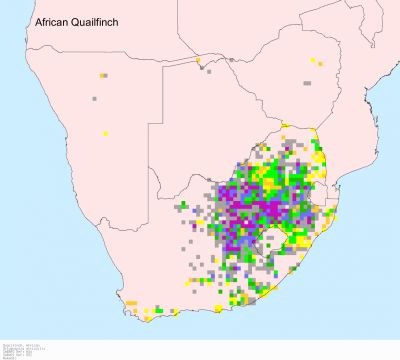
Habitat
It generally favours short, open grassland especially near water, as well as agricultural fields and woodland with patches of bare ground, open grassy hillsides, dry Kalahari sandplains.
Movements and migrations
Nomadic in the non-breeding season, moving into regions which have recently experienced rainfall and leaving once the ground dries up.
Diet
It mainly eats grass seeds taken from the ground, supplemented with small arthropods, especially termites and spiders.
Breeding
Breeding season is November to April in Eeastern Cape and KwaZulu-Natal (mainly January to March in Eastern Cape, November to December in KwaZulu-Natal), October to February in Orange Free State, all months except October in Gauteng (80% of nests January-March), December to May (mainly January-April) in Zimbabwe.
The nest is built by both sexes, consisting of a ball-shaped structure of grass blades, lined with seeding grass inflorescences and feathers. It is typically placed within or on top of a grass tuft, with the entrance often facing a small patch of bare soil. The clutch consists of 3-6 white eggs which are incubated for about 15 days.
The chicks are brooded and fed by both parents, leaving the nest after about 18-19 days and are able to fend for themselves about 26 days later.
Call
Irregular tink, tink-tink, tirrilink or tee tee tink-tink, somewhat bell-like flight and take-off call; song rapid rattling rambling klik klak kloik klik kluk klek.
Status
Common resident; nomadic after breeding.
Order: Passeriformes. Family: Estrildidae
Description
Length about 10 cm. Size very small; tail short. Adults are sexually dimorphic in plumage, and they vary in bill and plumage colour and the intensity of plumage markings. Above grey; eyepatch and chin white. White barring on chest and flanks. Iris orange-brown. Legs and feet light brown.
Male: Greyish-brown upperparts. Breast and flanks barred black and white. Forehead, malar stripe and throat black. Red bill when breeding. Pinkish legs. Long hind claw. Belly light rufous, shading to white undertail.
Females lack the facial mask and are duller. Forehead, malar stripe and throat grey. Bill dusky brown above, pink or red below.
Juveniles similar to the female but below light brown, without barring and a darker bill.
Chick: Pinkish orange with long white dorsal plumes; palate pale pink or yellowish with 6 black spots; tongue pale pink with 2 black spots and black tip; black crescent on inside of lower jaw; pale pink fleshy swelling at gape; 3 iridescent opalescent tubercles on black skin at base of each side of upper jaw, and 1 at base of lower jaw; alternating black and white tubercles along edges of upper and lower jaws.
Similar species: The absence of red or orange on the rump distinguishes it from Locustfinch and Orange-breasted Waxbill.
Taxonomy
We formerly recognized three species of Quailfinch: Black-faced Quailfinch Ortygospiza atricollis, Black-chinned Quailfinch Ortygospiza gabonensis, and African Quailfinch Ortygospiza fuscocrissa. These are all now lumped under a single species, but the forms are retained as identifiable subspecies groups.
O. a. muelleri: s Kenya to Angola, Namibia and s Botswana (Northern Cape?) Upperparts are nearly uniform with dark, indistinct streaks.
O. a. pallida: n Botswana
O. a. digressa: e Zimbabwe, s Mozambique and South Africa. Mostly darker than O. a. muelleri.
Distribution
Occurs in patches across sub-Saharan Africa. In southern Africa, it is locally common in South Africa, excluding most of the Northern and Western Cape, southern Mozambique, Zimbabwe, northern and south-eastern Botswana and northern Namibia (including the Caprivi Strip).

Habitat
It generally favours short, open grassland especially near water, as well as agricultural fields and woodland with patches of bare ground, open grassy hillsides, dry Kalahari sandplains.
Movements and migrations
Nomadic in the non-breeding season, moving into regions which have recently experienced rainfall and leaving once the ground dries up.
Diet
It mainly eats grass seeds taken from the ground, supplemented with small arthropods, especially termites and spiders.
Breeding
Breeding season is November to April in Eeastern Cape and KwaZulu-Natal (mainly January to March in Eastern Cape, November to December in KwaZulu-Natal), October to February in Orange Free State, all months except October in Gauteng (80% of nests January-March), December to May (mainly January-April) in Zimbabwe.
The nest is built by both sexes, consisting of a ball-shaped structure of grass blades, lined with seeding grass inflorescences and feathers. It is typically placed within or on top of a grass tuft, with the entrance often facing a small patch of bare soil. The clutch consists of 3-6 white eggs which are incubated for about 15 days.
The chicks are brooded and fed by both parents, leaving the nest after about 18-19 days and are able to fend for themselves about 26 days later.
Call
Irregular tink, tink-tink, tirrilink or tee tee tink-tink, somewhat bell-like flight and take-off call; song rapid rattling rambling klik klak kloik klik kluk klek.
Status
Common resident; nomadic after breeding.
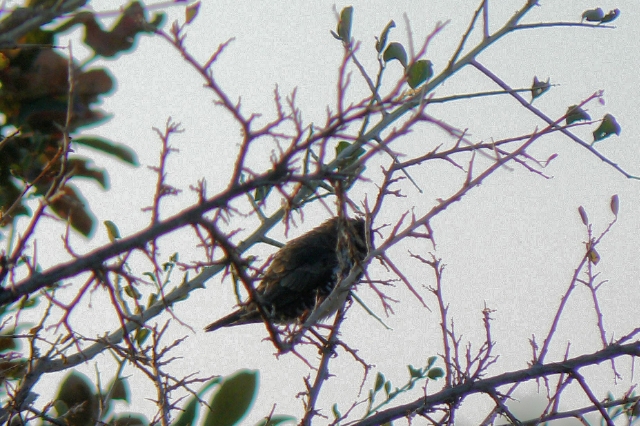
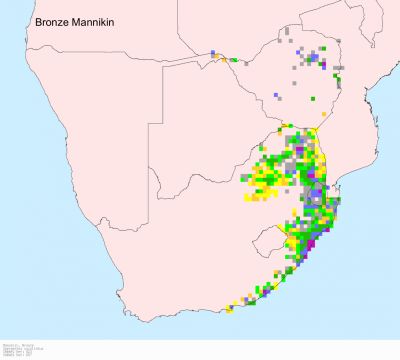

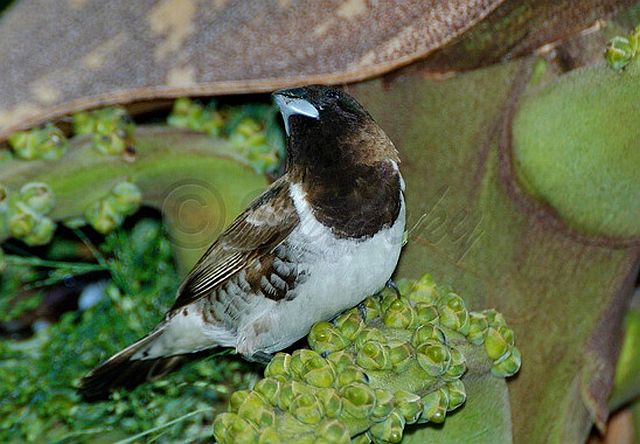
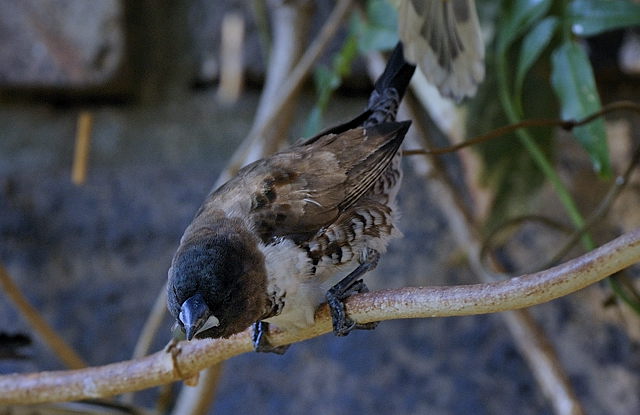 © Dewi
© Dewi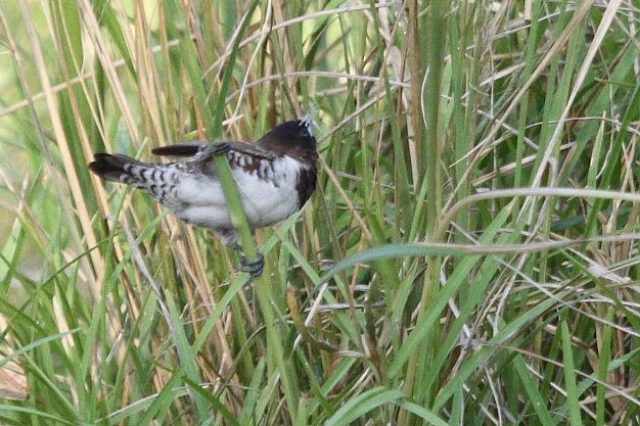 © Duke
© Duke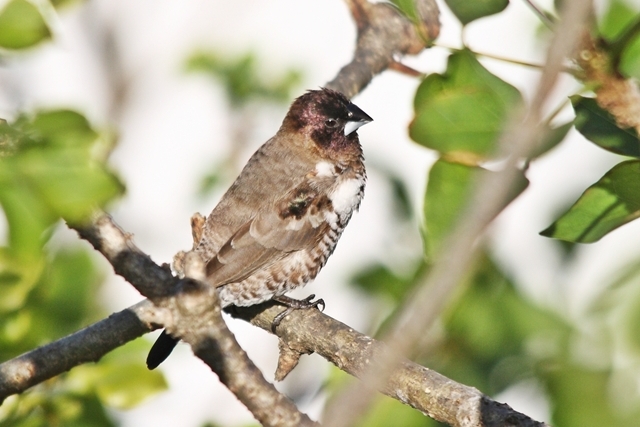 © Flutterby
© Flutterby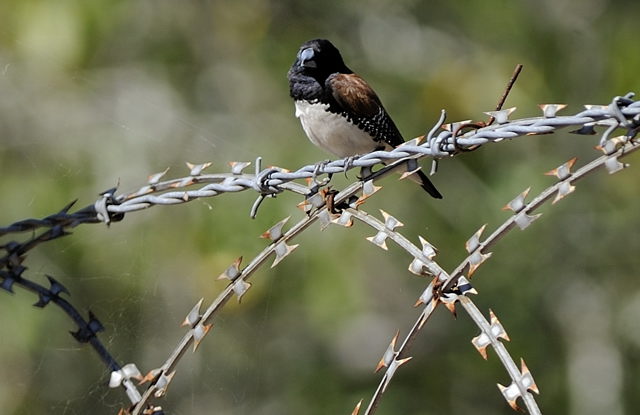

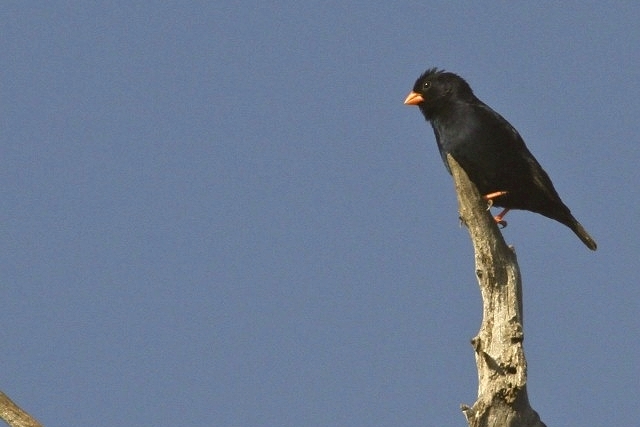 © nan
© nan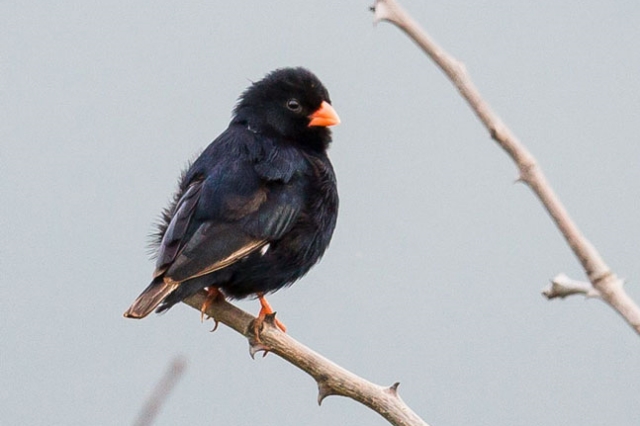 © Pumbaa
© Pumbaa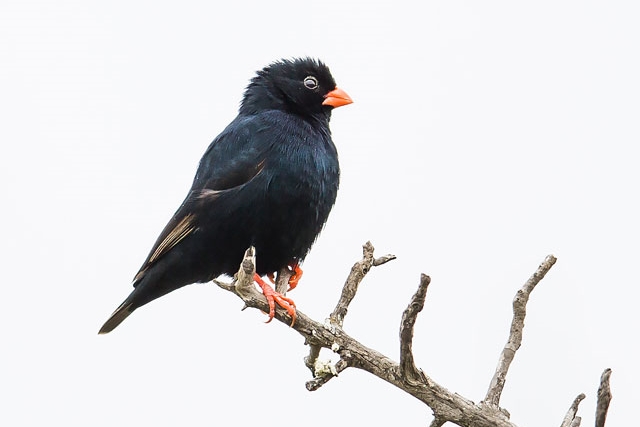 © Pumbaa
© Pumbaa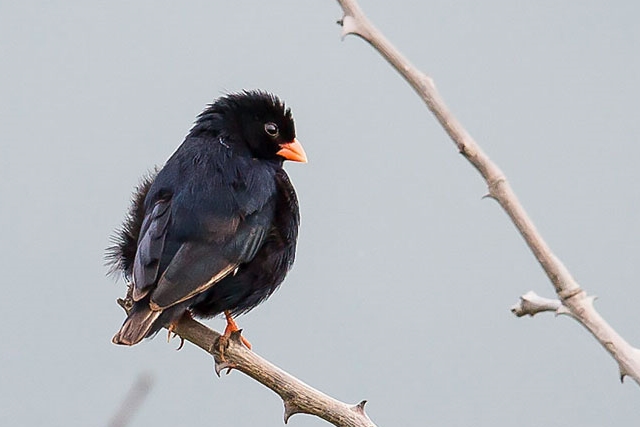 © Pumbaa
© Pumbaa